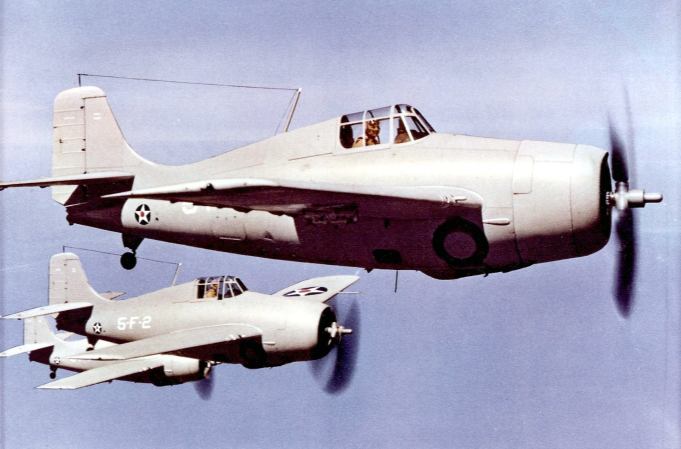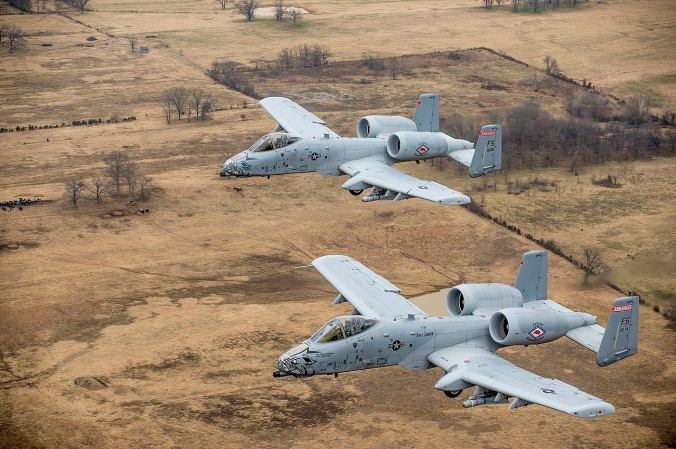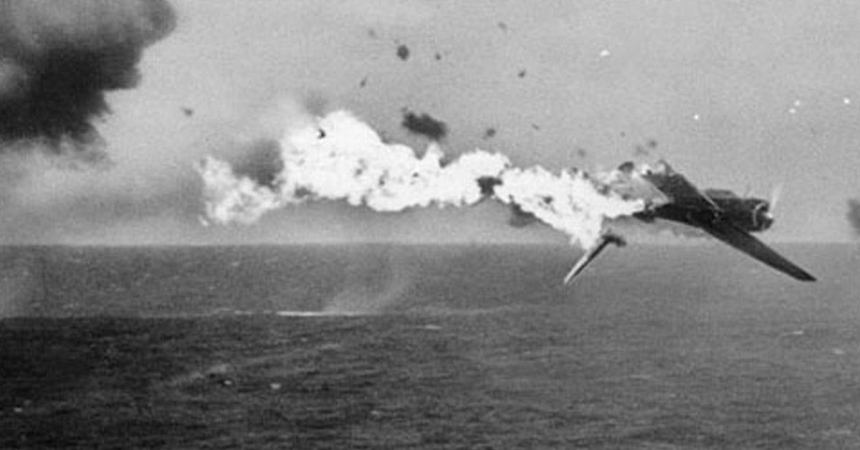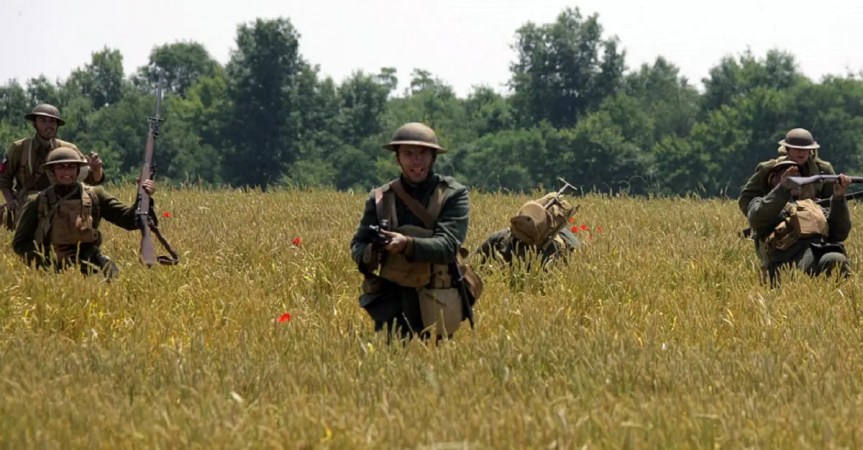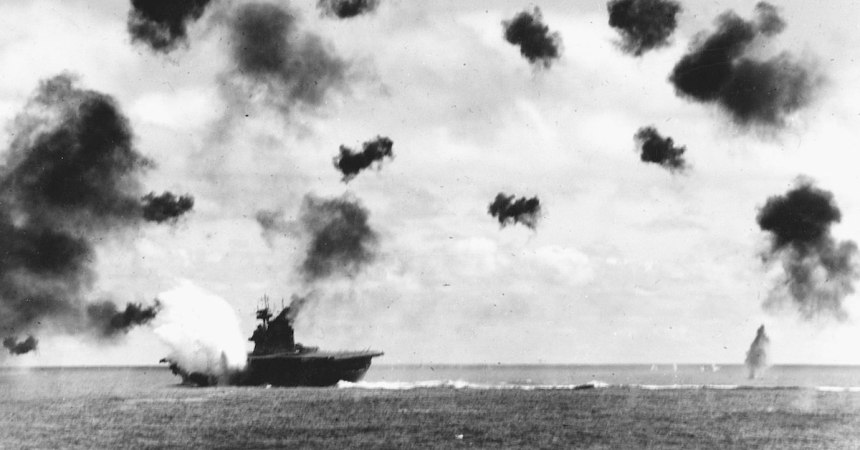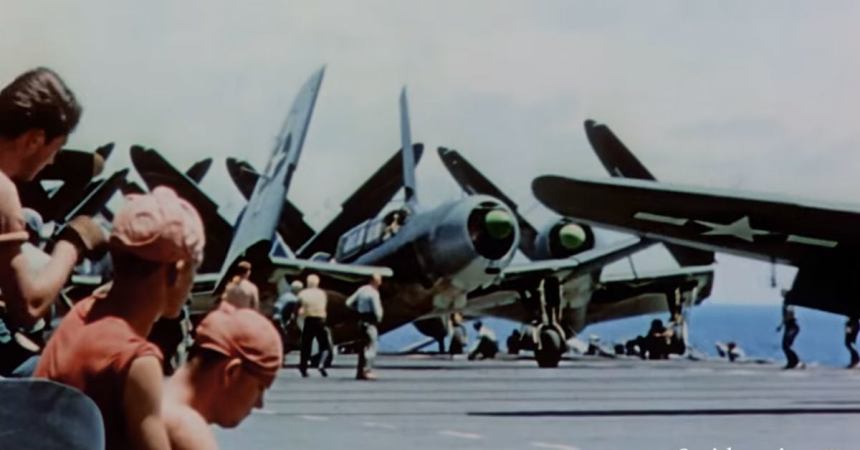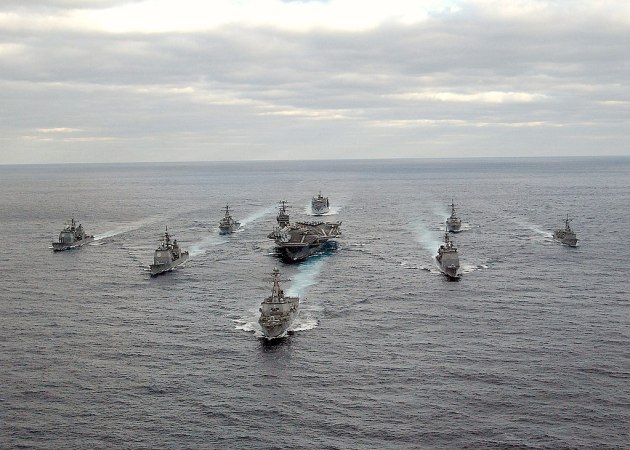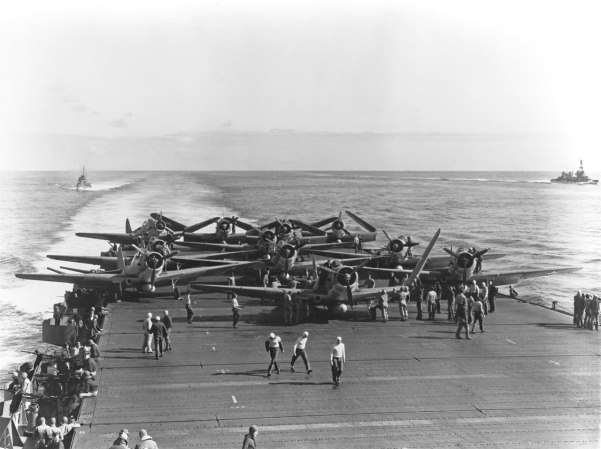The Battle of the Coral Sea is notable for being the first naval battle in which ships fought without ever sighting the enemy fleet. This means that all the fighting was done with aircraft — the ships themselves never exchanged fire.
But how would that same carrier battle play out today?
Let’s assume for the sake of this thought experiment that the United States is operating a pair of carriers, like USS Carl Vinson (CVN 70) and USS Gerald R. Ford (CVN 78), with a pair of Ticonderoga-class cruisers and eight Arleigh Burke-class destroyers. Let’s not forget the support from Australia and New Zealand — today, that’d be one Hobart-class destroyer and three Anzac-class frigates (two Australian, one from New Zealand) joining the escort.
The likely opponent? Let’s say the People’s Liberation Army Navy has sent both of their Kuznetsov-class carriers, escorted by four Type 52C destroyers and four Sovremennyy-class destroyers.

(U.S. Army)
The Chinese carriers would be operating at somewhat of a disadvantage from the get-go. The American-Australian force would have the benefit of land-based maritime patrol planes, like the P-3 Orion and P-8 Poseidon, as well as radar planes, like the E-3 Sentry and E-2 Hawkeye. These planes would likely find the Chinese carriers and get a position report off. The pilots would be heroes. Unfortunately, a J-15 Flanker would likely shoot them down quickly thereafter.
By this point, though, the Carl Vinson and Gerald R. Ford are going to be launching their alpha strikes on the Chinese carriers. Each of these carriers will be operating 36 F/A-18E/F Super Hornets and a dozen F-35C Lightnings. This strike will likely be done in conjunction with some B-1B Lancers operating from Australia or some other land base.

(Japanese Ministry of Defense)
The Chinese J-15s will fight valiantly, but the American carrier-based fighters will probably wipe them out – though they’ll suffer some losses in the process. The Chinese force will, however, be hit by a number of AGM-158C Long-Range Anti-Ship Missiles. The carriers will be sunk or seriously damaged, left stranded a long way from home. One or both may even be sunk by submarines later (an American submarine tried to attack the damaged Shokaku after the Battle of the Coral Sea, but failed to get in position).
Ultimately, as was the case in the first Battle of the Coral Sea, the United States would win. This time, though, it would be a much more unequivocal victory.



